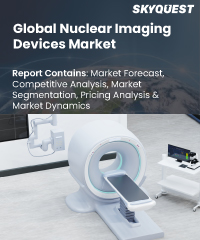
Report ID: SQMIG35A2604
Skyquest Technology's expert advisors have carried out comprehensive research on the nuclear imaging devices market to identify the major global and regional market trends and growth opportunities for leading players and new entrants in this market. The analysis is based on in-depth primary and secondary research to understand the major market drivers and restraints shaping the future development and growth of the industry.
Technological Advancements
High Cost & Maintenance
REQUEST FOR SAMPLE
Want to customize this report? This report can be personalized according to your needs. Our analysts and industry experts will work directly with you to understand your requirements and provide you with customized data in a short amount of time. We offer $1000 worth of FREE customization at the time of purchase.
Feedback From Our Clients

Report ID: SQMIG35A2604
sales@skyquestt.com
USA +1 351-333-4748